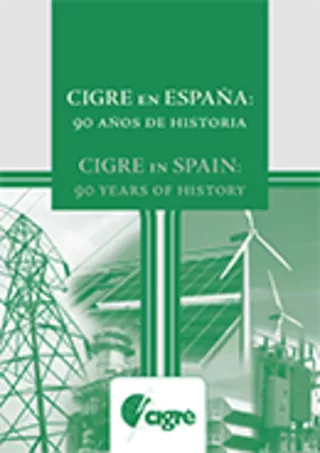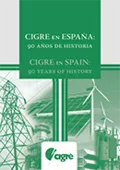Summary
- To show readers the multiple connections over time of the Spanish electric power industry: those of generators, carriers, distributors and marketers, builders, engineering companies, universities, regulators, etc. and of the NCS-CIGRE in its activities at both the national and international level.
- To give new members a broad overview of the activities of their predecessors, recounted with the pride of belonging to an organisation that represents the natural continuity of the industry while continuing to encourage innovation in its midst.
- To give due recognition to the milestones passed by the Spanish experts of CIGRE in the course of more than eight decades.
- To explain the multiple advantages that membership of NCS-CIGRE offers both to individuals and to the companies for which they work.
- And, lastly, to explain the activities and organisation of both the NCS-CIGRE and the parent organisation CIGRE in order to familiarise the interested reader with both.
In order to achieve this, without disregarding the technical information, special attention has been given to what we might call the “emotional intelligence”, that which only our fellow human beings can communicate to us, in this case by means of résumés of the answers to questionnaires sent to members who have been (and in some cases still are) particularly active in the NCSCIGRE. Unfortunately, for purely biological reasons we cannot learn now the opinions of the members who played an active part in the organisation in its first few decades.
This document was drawn up in four main chapters:
The second chapter is devoted to the development of the Spanish electric power sector with respect both to its technical progress and to aspects such as the market and its regulation, ending with a profile of the sector at the present time.
The third chapter focuses on the reasons that led to the appearance of international non-profitmaking bodies acting in support of the electric power industry to stimulate a balanced economic development (CIGRE was set up in 1921 and is the oldest). From that starting point the chapter describes what CIGRE is and how it works.
Chapter 4 is devoted to the growth and activities of NCS-CIGRE as well as the workshops it holds in Spain. Due to its special influence on the history of the sector, a sub-chapter is devoted to the RIAC, the initials of the Iberoamerican Region of CIGRE, which encompasses the CIGRE national committees of several South and Central American countries plus Spain and Portugal. The chapter concludes with a series of arguments explaining the advantages of belonging to NCS-CIGRE.
Chapter 5 presents information provided by significant members of the organisation, who tell us of their experiences of CIGRE. They speak of the problems, some of them personal, some family, some professional, that membership involved. But they also explain the advantages obtained, of how they saw the Spanish sector in comparison with those of other countries and, also, of a great many things of interest to new members in getting to know the special circumstances of those early days.
In addition, we have a chapter of conclusions, together with a bibliography and a list of links for readers to extend their research, plus a series of appendices giving the key figures of the NCS-CIGRE.
"There is nothing as irresistible as an idea whose time has come".
Víctor Hugo
Additional informations
| Publication type | CIGRE History books |
|---|---|
| Reference | CIGHISCNSP |
| Publication year | |
| Publisher | CIGRE |
| Pages number | 65 |
| Price for non member | 35 € |
| Price for member | Free |


